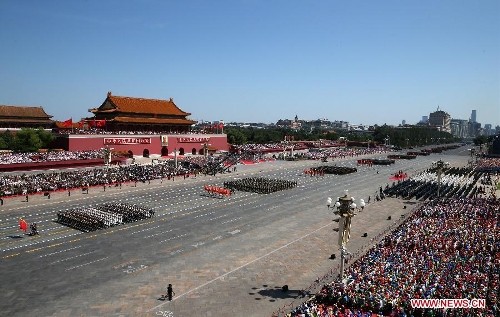The Chinese government, led by President Xi Jinping, commemorated Martyrs' Day on Wednesday at the historic Tiananmen Square and honored the country's deceased national heroes.
The event, which coincided with the eve of the 66th National Day, gathered veterans, family members of martyrs and representatives of Chinese citizens from all walks of life at the Square's Monument to the People's Heroes.
Along with Xi, Premier Li Keqiang, Vice Premier Zhang Gaoli, top political advisor Zhang Dejiang, top discipline inspector Wang Qishan, and senior leader Liu Yunshan also graced the event.
On the pedestal of the monument, whose foundation was first laid on Sept. 30, 1949, are eight reliefs symbolizing major events that transpired in Chinese revolutionary history since the First Opium War (1840 to 1842).
As defined by the government, martyrs are "people who sacrificed their lives for national independence and prosperity, as well as the welfare of people in modern times, or after the First Opium War." Currently, their populace is estimated at around 20 million.
One of the main highlights of the revelry was the offering of baskets of flowers by 18 honor guards in front of the marble monument. The baskets were presented in the names of the Communist Party of China Central Committee, the State Council, the Central Military Commission, democratic parties and non-party individuals, as well as mass organizations, veterans, senior people and the families of martyrs.
President Xi led a walk of tribute around the edifice after tying a red ribbon in one of the baskets.
Last year, the CCP approved Sept. 30 as Martyrs' Day as a way to remember the people who sacrificed their lives to fight for China's liberty and prosperity.
Earlier this month, the Tiananmen Square also hosted a momentous military parade commemorating the 70th anniversary of the end of World War II.



























